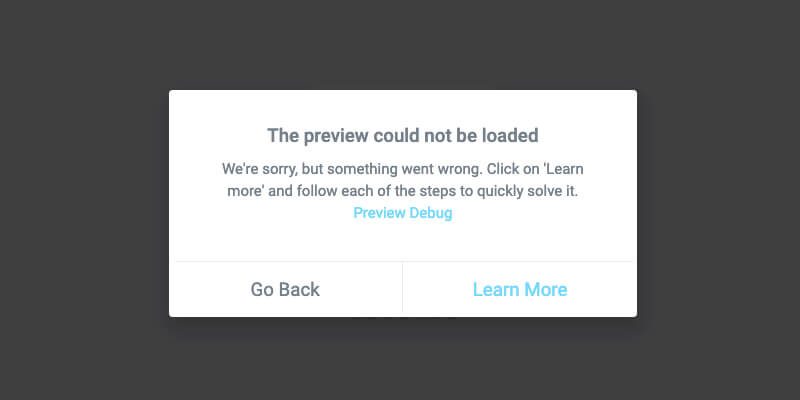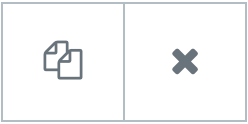Related Posts
Are you seeing an error when you try to use Elementor that says: 'Could not load the preview'? This is one of the most common errors in Elementor, and it is usually quite easy to fix.
This happens when the page preview is not available.
The error will try to give more information if possible. For example, in the image below, it says "Debug Preview." The "debug preview" option allows the user to verify that there is no redirect on the page or a 404 error.

Elementor can detect in some cases the exact problem:
1) No theme - Some of your theme files are missing.
2) Corrupted .htaccess: "Your site's .htaccess file appears to be missing."
3) HTTP errors: the format is
When it is not possible to provide any other information, follow the steps below in this article to see how you can quickly fix this problem and redesign your website with Elementor.
Note: If this message is received on a WooCommerce template or archive page such as Blog page, this is normal and in this case please use WooCommerce Builder or Theme Builder instead of trying to directly edit these pages.
If you get the error message "preview could not be loaded," try the following:
- Enable safe mode. Follow the procedures in What is safe mode?
- Make sure the theme files exist. If no theme is available, go ahead and install or reinstall a theme.
- Check the structure of your permanent links. Try saving your permalinks one more time. Also, try changing the permalink structure to "Normal". Some servers don't allow writing to the .htaccess file and in fact you can't always modify your permalink structure and edit with Elementor.
- Edit in incognito mode with your browser. This rules out a problem with a plugin or with the browser cache. In Chrome, at the top right, click on 'More' and then on 'New incognito window'. A new window appears. In the top corner, look for the incognito icon that indicates that you are indeed in incognito mode. Now, go back to Elementor and see if the error persists. You should also make sure that no plugins work in incognito mode and possibly try a different browser entirely.
- Solve the rocket charger problem. Elementor and Cloudflare integrate seamlessly with each other. Although there is a problem with Rocket Loader. Click for solution
- Check that you don't have a redirect on the page. You can see if this is the case by pressing the "debug preview" button.
- If the index.php file has been renamed or its content includes anything other than the WordPress requirement, this will also lead to this error.
- Solve hosting problems. Although this situation is very rare, check with your hosting provider if your WordPress installation includes the .htaccess file. If your .htaccess file is missing, look at this link to regenerate. Also, check with your hosting company if their server clears the PHP $ _GET variable.
- HTTP errors. Possible solutions for each type of HTTP error listed below:
Note: Safe mode can only be activated by site administrators (that is, users with administrator privileges), because only they can disable plugins. If you don't get the Enable Safe Mode option, ask your site administrator to turn on Safe Mode and fix the problem for you. In the case of a multi-site configuration, only super administrators can enable safe mode.
If you are receiving 403 errors, check the following:
- You may have a corrupted .htaccess file. Download your current .htaccess file to save as a backup. Then delete it from your server. Visit their site and a new default .htaccess file will be generated automatically. If this solves your problem, look at the .htaccess file you downloaded to determine if there is any code that needs to be fixed.
- Your file permissions may not be correct. Ask your host to verify that your WordPress directories and files have the correct permissions.
- This may be due to a security plugin. To fix this, turn on the plugin's learning mode or contact their support.
- This problem can also be caused by your server's firewall, such as mod_security, so you should check with your hosting company.
- Another plugin may be causing a conflict. Disable all plugins except Elementor. If the problem goes away, you know that the problem is another plugin. Reactivate each plugin, one at a time, testing your site with each reactivation. Keep testing until you find the plugin that is causing the failure. Contact the developers of that plugin for assistance, or use another plugin with similar functionality.
If you are receiving 401 errors, you are trying to access a page that requires authentication. If the page shouldn't ask for authentication, contact your host for help in removing the authentication requirement or check the security plugins you may be using for options to disable it.
If you are receiving 500 errors, click here to see the debugging procedure.
If you are unable to resolve the issue by following any of these steps, we suggest that you raise the issue in the Elementor Community on Facebook.
If you have our Pro version, you can send us your website login details and our support team will try to identify the cause and fix it.




